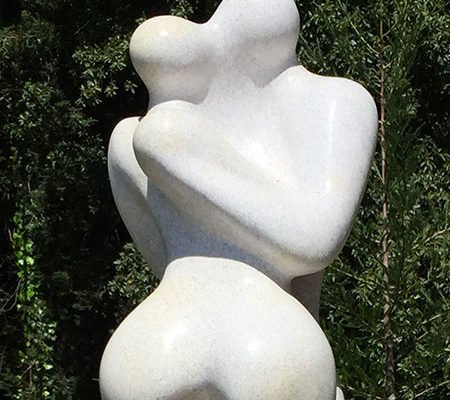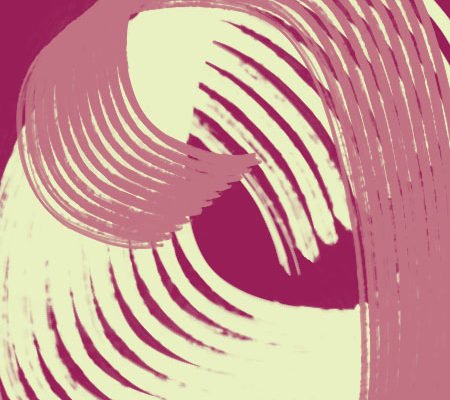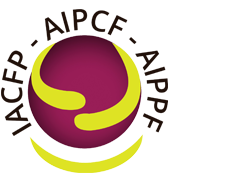 https://aipcf.net/wp-content/uploads/2017/02/couple-1.jpg
450
450
AIPCF
http://aipcf.net/wp-content/uploads/2017/02/logo-aipcf11.png
AIPCF2017-04-03 00:54:532017-05-11 15:00:13Theory and technique of couple psychoanalysis
https://aipcf.net/wp-content/uploads/2017/02/couple-1.jpg
450
450
AIPCF
http://aipcf.net/wp-content/uploads/2017/02/logo-aipcf11.png
AIPCF2017-04-03 00:54:532017-05-11 15:00:13Theory and technique of couple psychoanalysisCouples and Family Psychoanalytical Therapy Models
Specific nature of our model within the context of PCFT: Field link and co therapy using psychoanalytic psychodrama.
Ana Packciarz Losso et Roberto Losso (Buenos-Aires, argentine, Bologne, Italie)
Our model is based on psychoanalytic theory (Freud, Klein, Winnicott, Bion) and mainly on Link theory (Pichon-Rivière), identification theory, (W and m Baranger), link field theory (Losso: intrapsychic field link and interpsychic field link) and scenario theory. We also consider the internal/ external group dialectic, the significant link structures (unconscious alliances), transpersonal defenses, the family myth, inter and transgenerational transmission, unconscious phenomena in the link field, mythic transfers and collusions.
Technique:
We work as co-therapists, and as a heterosexual couple that is hierachically equal. This fosters a “second look” on the link field. The therapeutic couple can function, to a certain extent as a communication model. It can disagree in a dialectic manner that allows for each therapist’s stance to be integrated in a complementary manner. This approach helps to differentiate legitimate disagreements, which exist in any normal couple and family where differences exist (where there is autonomy) between subjects, from invalidations. Using the transferential link, the therapeutic couple, as a model parental couple, can create conditions such that the family can experience in the here and now novel experiences and gain ego strength
We listen to verbal communications and take into account both the patient’s and the analysts’ non-verbal communications.
As therapeutic resources, we address our interpretations to the group, to sub-groups within the family and to individuals, constructions (primarily concerned with the mythical family history), psychodrama techniques based on scenarios that arise in the link field (pathogenic scenarios and key scenes). Starting from the manifest scenario, we work with dramatizations to try to elicit the latent scene. Dramatizations are particularly useful to explore inter and trans-generational links (on occasion, during the dramatization we call upon some of the family’s historical characters).
Bibliography
BARANGER, M. y W. (1961-62): La situación analítica como campo dinámico. Rev. Uruguaya Psicoanál., t. 4, n. 1.
LOSSO, R. & PACKCIARZ LOSSO, A. (1982a): Crónica del tratamiento psicodramático psicoanalítico de una pareja. In: Desarrollos en psicoterapia de grupo y psicodrama (ed. J. L. Marti i Tusquets y L. Satne). Barcelona, Gedisa.
LOSSO, R. & PACKCIARZ LOSSO, A. (1982b): Lo psicodramma psicoanalitico di coppia. Terapia Familiare Notizie, n. 1.
LOSSO, R. (1999a): Teoría del campo y psicoanálisis de familia y de pareja. In: Kancyper, L. (comp): Volviendo a pensar con Willy y Madeleine Baranger. Nuevos desarrollos. Buenos Aires, Lumen. p. 237
LOSSO, R. (2000): Le mythe familial, source des transferts familiaux. Le Divan familial.
LOSSO, R. (2001): Psicoanàlisis de la familia. Recorridos teórico-clìnicos. Buenos Aires, Lumen.Traduzione italiana, Psicoanalisi della famiglia. Percorsi teorico-clinici. Milano, Franco Angeli, 2000.
LOSSO, R. (2006): Intrapsychic, Interpsychic and Transpsychic Communication. In; New Paradigms for treating relationships; (ed. Scharff, J. S. and Scharff, D.)- Lanham, MD, Janson Aronson, pp- 33-42
LOSSO, R. & PACKCIARZ LOSSO, A. (2006): Divorce Terminable and Interminable. in; New Paradigms for treating relationships; (ed. Scharff, J. S. and Scharff, D.)- Lanham, MD, Janson Aronson, pp. 119-131
PICHON RIVIERE, E. (1971): Del Psicoanálisis a la Psicología Social, Buenos Aires, Galerna.
À voir aussi
 https://aipcf.net/wp-content/uploads/2017/02/couple-1.jpg
450
450
AIPCF
http://aipcf.net/wp-content/uploads/2017/02/logo-aipcf11.png
AIPCF2017-04-03 00:54:532017-05-11 15:00:13Theory and technique of couple psychoanalysis
https://aipcf.net/wp-content/uploads/2017/02/couple-1.jpg
450
450
AIPCF
http://aipcf.net/wp-content/uploads/2017/02/logo-aipcf11.png
AIPCF2017-04-03 00:54:532017-05-11 15:00:13Theory and technique of couple psychoanalysis https://aipcf.net/wp-content/uploads/2017/02/couple-4.jpg
450
450
AIPCF
http://aipcf.net/wp-content/uploads/2017/02/logo-aipcf11.png
AIPCF2017-04-03 00:52:492017-05-11 15:02:41Psychoanalytic psychotherapy of the couple and attachment
https://aipcf.net/wp-content/uploads/2017/02/couple-4.jpg
450
450
AIPCF
http://aipcf.net/wp-content/uploads/2017/02/logo-aipcf11.png
AIPCF2017-04-03 00:52:492017-05-11 15:02:41Psychoanalytic psychotherapy of the couple and attachment https://aipcf.net/wp-content/uploads/2017/02/Modeles3.jpg
450
450
AIPCF
http://aipcf.net/wp-content/uploads/2017/02/logo-aipcf11.png
AIPCF2017-04-03 00:50:522017-05-11 15:05:21The place and the practice of CFPT prenatally (before and after birth)
https://aipcf.net/wp-content/uploads/2017/02/Modeles3.jpg
450
450
AIPCF
http://aipcf.net/wp-content/uploads/2017/02/logo-aipcf11.png
AIPCF2017-04-03 00:50:522017-05-11 15:05:21The place and the practice of CFPT prenatally (before and after birth) https://aipcf.net/wp-content/uploads/2017/02/COUPLE-2.jpg
450
450
AIPCF
http://aipcf.net/wp-content/uploads/2017/02/logo-aipcf11.png
AIPCF2017-04-03 00:44:402017-05-11 15:06:24Psychoanalytic Intervention models with the parental couple
https://aipcf.net/wp-content/uploads/2017/02/COUPLE-2.jpg
450
450
AIPCF
http://aipcf.net/wp-content/uploads/2017/02/logo-aipcf11.png
AIPCF2017-04-03 00:44:402017-05-11 15:06:24Psychoanalytic Intervention models with the parental couple https://aipcf.net/wp-content/uploads/2017/02/Modeles5.jpg
450
450
AIPCF
http://aipcf.net/wp-content/uploads/2017/02/logo-aipcf11.png
AIPCF2017-04-03 00:42:422017-05-11 15:08:28The model of Interfantasmatization. The Relational Psychic Apparatus in families, couples and groups.
https://aipcf.net/wp-content/uploads/2017/02/Modeles5.jpg
450
450
AIPCF
http://aipcf.net/wp-content/uploads/2017/02/logo-aipcf11.png
AIPCF2017-04-03 00:42:422017-05-11 15:08:28The model of Interfantasmatization. The Relational Psychic Apparatus in families, couples and groups. https://aipcf.net/wp-content/uploads/2017/05/Famille-1.jpg
500
500
AIPCF
http://aipcf.net/wp-content/uploads/2017/02/logo-aipcf11.png
AIPCF2017-04-03 00:40:442017-05-11 15:10:32Le groupe multi-familial psychanalytique (G.M.F.P.)
https://aipcf.net/wp-content/uploads/2017/05/Famille-1.jpg
500
500
AIPCF
http://aipcf.net/wp-content/uploads/2017/02/logo-aipcf11.png
AIPCF2017-04-03 00:40:442017-05-11 15:10:32Le groupe multi-familial psychanalytique (G.M.F.P.) https://aipcf.net/wp-content/uploads/2017/02/couple3.jpg
450
450
AIPCF
http://aipcf.net/wp-content/uploads/2017/02/logo-aipcf11.png
AIPCF2017-04-03 00:38:472017-05-11 15:26:17The soma is individual; the psyche is essentially a group
https://aipcf.net/wp-content/uploads/2017/02/couple3.jpg
450
450
AIPCF
http://aipcf.net/wp-content/uploads/2017/02/logo-aipcf11.png
AIPCF2017-04-03 00:38:472017-05-11 15:26:17The soma is individual; the psyche is essentially a group https://aipcf.net/wp-content/uploads/2017/02/Modeles8.jpg
450
450
AIPCF
http://aipcf.net/wp-content/uploads/2017/02/logo-aipcf11.png
AIPCF2017-04-03 00:35:542017-05-11 15:22:20Specific nature of our model within the context of PCFT: Field link and co therapy using psychoanalytic psychodrama.
https://aipcf.net/wp-content/uploads/2017/02/Modeles8.jpg
450
450
AIPCF
http://aipcf.net/wp-content/uploads/2017/02/logo-aipcf11.png
AIPCF2017-04-03 00:35:542017-05-11 15:22:20Specific nature of our model within the context of PCFT: Field link and co therapy using psychoanalytic psychodrama. https://aipcf.net/wp-content/uploads/2017/02/lolo_ipi.gif
148
177
AIPCF
http://aipcf.net/wp-content/uploads/2017/02/logo-aipcf11.png
AIPCF2017-02-22 11:23:312017-05-11 15:24:48IPI’s way of working
https://aipcf.net/wp-content/uploads/2017/02/lolo_ipi.gif
148
177
AIPCF
http://aipcf.net/wp-content/uploads/2017/02/logo-aipcf11.png
AIPCF2017-02-22 11:23:312017-05-11 15:24:48IPI’s way of working




